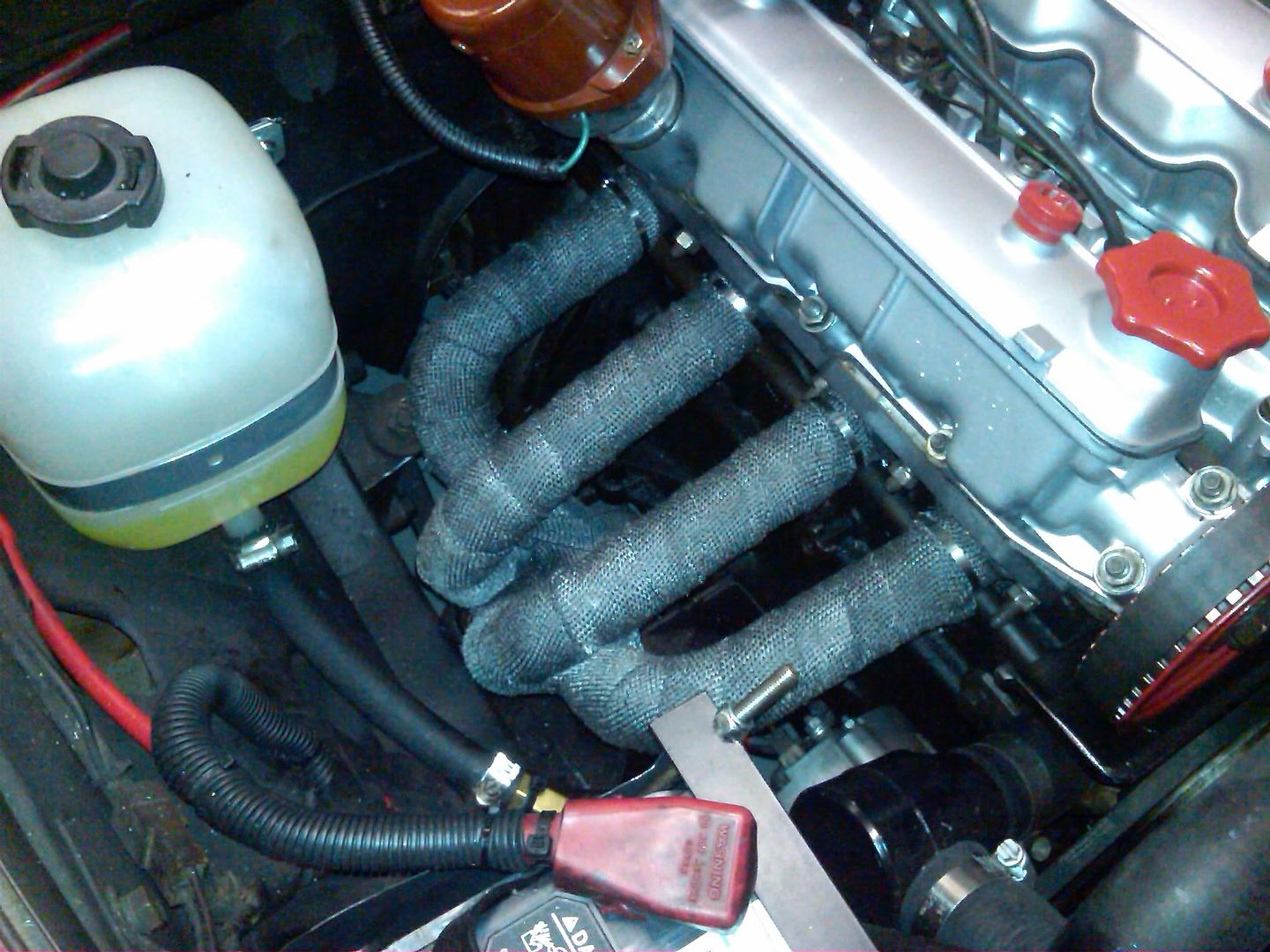In reply to splitime:
Radiator:
Sure thing! I made up a thread over on FiatSpider.com after I finished the install documenting the steps. Now, you 'could' go buy the kit from Mark Allison at Allison Automotive, or if you wanted to the legwork yourself you could follow this process:
1) Start with an aluminum radiator 22x19x3 from Speedway for around $135 shipped.
2) Then get a piece of 1/4" plate steel cast off from a local metal supplier $10, cut 4 4" long 2" wide strips, bend at 90 degree angles, drill holes.
3) Get mounting bolts and washers for the radiator, some later sheet metal screws from hardware store ($10 all in), and 4 1.25" radiator support bushings that have washers in them - two piece for above and below the bracket so you isolate the radiator from the car ($10)
4) Finally get some 0.75" OD steel tube, 0.5" ID should have a thick enough wall, you have to get 4 female-female connectors to attach to the stock sway bar studs that extrude from the frame, these connectors need to fit inside the steel tube above since that's what will now be taking the load of the sway bar bracket. You also need some threaded rod, same pitch as the stock sway bar bracket studs. Reuse the original washers and nuts. Due to the angle of the frame at the bracket attach points, you will need 2 longer and 2 shorter tubes, the longer should be around 1.5" and the shorter 1.2", that should drop the sway bar enough to clear the radiator. You can get all this stuff at Grainger, McMaster-Carr, hardware store, online, etc for less than $20
5) Now the fun part, as I called out in my other thread, you will need to cut off the old mount tabs because they are spot-welded (upper) and the lower on the older Fiats, the later models bolt on/off, and I tapped the air flow flanges on either side toward the front of the car to get the radiator right up against the front cross-member. Finally you have to grind out the edge of the lip of the top radiator cross-member. You don't have to take off much, and don't go in too deep. This member is spot welded so you're just taking off lip, nothing structural.
6) Drill upper mounting holes, see the pictures but you'll need to drill holes for the large sheet metal screws to hold the uppers in place. The bottom holes should work with existing holes, but you might have to make some new ones worst case as there are slight variations in the lower cross member between early and later spiders.
If you've done it right, you should be able to reuse all hoses if you have an internal or external t-stat and you can reuse your old radiator cap.
7) The next thing you'll need is a slimline electric fan and an adjustable thermostat with thermo-probe. I'm using a 14" slimline straight-blade fan, the s-curved are too thick (2.5" vs 2" for the straight blade fans), Check Amazon for 14" slimline fans (should be under $40 shipped), and then get an adjustable thermostat and don't forget a fan mounting strap kit
All told you should be able to do the full conversion for less than $250 and a couple of hours of work. Considering a 'new' copper radiator is $300-400 and will go bad inside of a few years, and Mark's kit is about $350, the only real difference is sourcing the parts or letting someone else do it for you, but once you have it converted to aluminum, you'll never have to worry about cooling again.
Fuse Block:
I followed Matt Webb's Mirafiori article on swapping in an ATO Fuse Block
But I also had a writeup that covered some things Matt's article missed: http://www.fiatspider.com/f08/viewtopic.php?f=6&p=99451 and http://grassrootsmotorsports.com/forum/grm/rewired-the-fiats-fuse-block/31265/page1/
The biggest thing is creating Y-splitters for the fuses since the old barrel fuse block had single side and multi-sided connectors to the fuses, examine the original fuse block to understand exactly what I'm saying.
Bumpers:
On the later big-bumper cars you'll shed a ton of weight, literally it's something like 75-100lbs if memory serves and they provide little if any real crash protection since the car itself is made of such soft steel and didn't get additional reinforcements. There are conversion kits that are expensive, OR, if you can source some old bumpers, don't mind welding sheetmetal and can do some painting you can modify everything you need, or else make brackets with the existing holes in the facia without having to patch and paint.
You hit the nail on the head though, I specifically sourced an earlier car for the chrome bumpers, I just like the way it looks better. bumperless can be made to be real good looking too, especially if you get the lower valance, or the Abarth Rally style one on a lowered car with wider wheels/tires. There are conversions for turn signals and other things to blank off the holes in the big bumper cars. I think one of the better options is to put the black rubber bumperettes with turn signals in the lower outter holes. That cleans up the front end pretty good unless you want to convert to chrome.









































